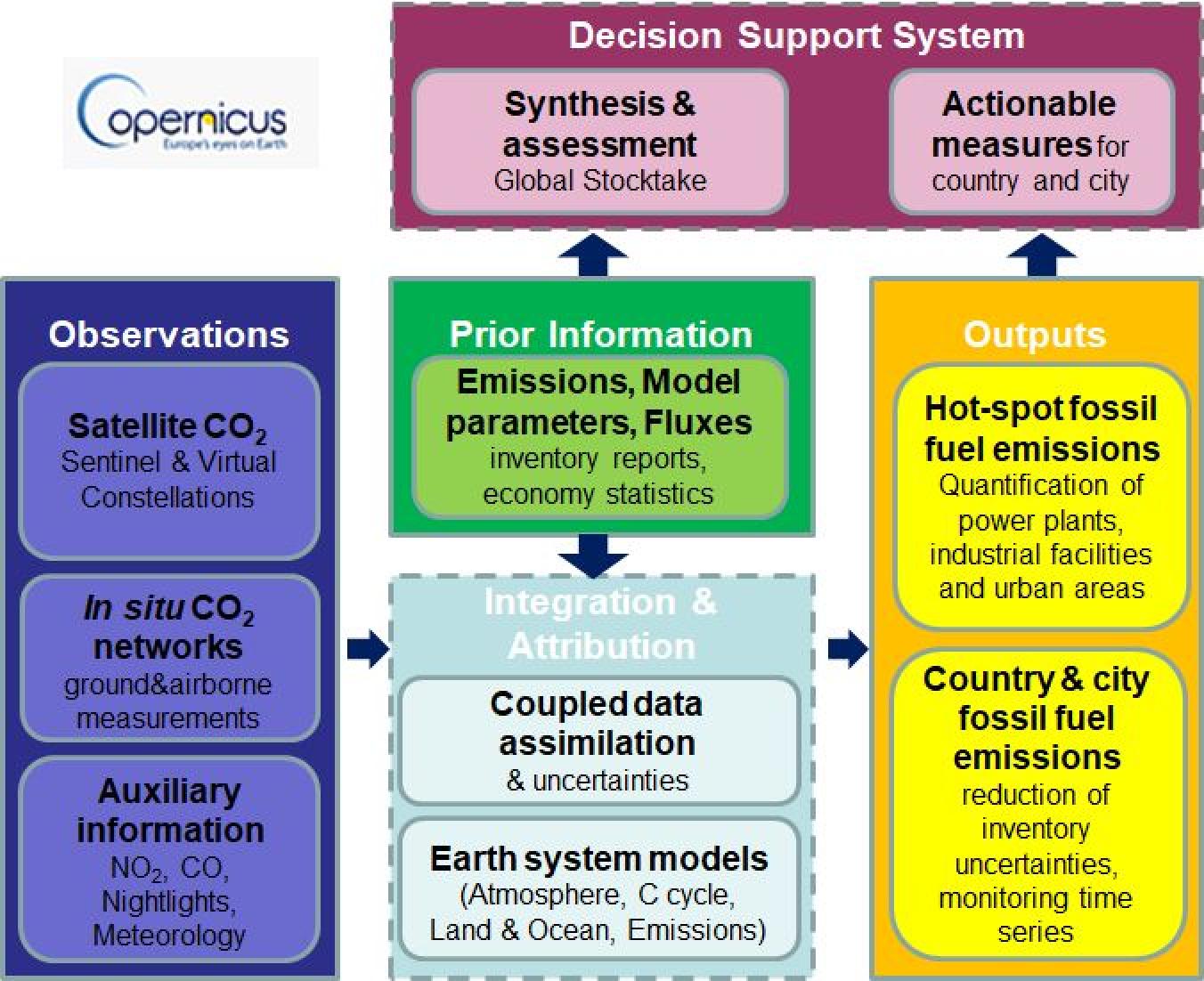Overview
At the Paris climate conference (COP21) in December 2015, 195 countries adopted the global climate deal with contributions of each of the countries to reduce greenhouse gas (GHG) emissions, to be reported and monitored in a transparent way. The Green Deal strengthened further the Paris Agreement commitments of the EU with the ambition of climate neutrality in 2050. The European Commission does not only plan scenarios but wants to lead by example. Trust in the climate negotiations is built up by monitoring GHG reductions with observation-based evidence, in line with what EC President von der Leyen said at the last COP25 “What gets measured, gets done”.
CO2 monitoring and verification support
The European Commission has taken the initiative to set up an Operational Anthropogenic Carbon Dioxide (CO₂) Emissions Monitoring & Verification Support (MVS) Capacity in the frame of the Copernicus Programme, in collaboration with the European Space Agency (ESA), the European Centre for Medium-Range Weather Forecasts (ECMWF) and the European Organisation for the Exploitation of Meteorological Satellites (EUMETSAT). The proposed European CO2 MVS capacity optimally combines the satellite observations (to be provided by a constellation of dedicated sentinel satellites), in situ measurements gathered by dedicated networks and geophysical models.

Experts have been brought together in a CO2 Monitoring Task Force and produced three science for policy reports: the so-called blue, red and green reports:
-
the "blue" report provides an overview of the state-of-the-art on observation-based monitoring of CO2 emissions,
-
the "red" report elaborates a full system architecture for monitoring and verifying anthropogenic CO2 emissions in the frame of the Paris Agreement,
-
the "green" report describes the needs for in situ CO2 measurements to validate the deliverables from this capacity.

Research developments
Research and innovation are needed to develop not only the sensors for measuring total column atmospheric CO2 from space but also to build an effective ground segment with sophisticated models for extracting the anthropogenic part of the CO2 emission plumes.
The H2020 projects “CO2 Human Emissions” (CHE), “Verifying GHG emissions” (VERIFY) and “Prototype system for a Copernicus CO2 service” (CoCO2) are considerably contributing to this.
Being the first Monitoring and Verification Support capacity of its kind, the European Commission’s CO2 MVS will help Europe to drive developments of a similar nature in intragovernmental frameworks; efforts have already begun in this direction, in international bodies such as the United Nations Framework Convention on Climate Change (UNFCCC), or the World Meteorological Organisation (WMO).
Further readings
Reports:
Scientific papers:
-
Towards an operational anthropogenic CO2 emissions monitoring and verification support capacity
-
Temporary reduction in daily global CO2 emissions during the COVID-19 forced confinement
-
Representing model uncertainty for global atmospheric CO2 flux inversions using ECMWF-IFS-46R1
-
The consolidated European synthesis of CO2 emissions and removals for EU27 and UK: 1990–2018
Related Projects
CHE - CO2 Human Emissions
CHE is a project for building an operational anthropogenic CO2 emission monitoring support capacity.
CoCo2 - Copernicus CO2 service
The CoCO2 project, building a prototype system for a Copernicus CO2 emission monitoring service, contributes to the development of the European CO2MVS capacity.
VERIFY - Verifying Greenhouse Gas Emissions
VERIFY is funded by under the H2020 programme and it develops a system to estimate greenhouse gas emissions.
| Originally Published | Last Updated | 16 Apr 2021 | 02 May 2023 |
| Knowledge service | Metadata | Earth Observation |
Share this page
